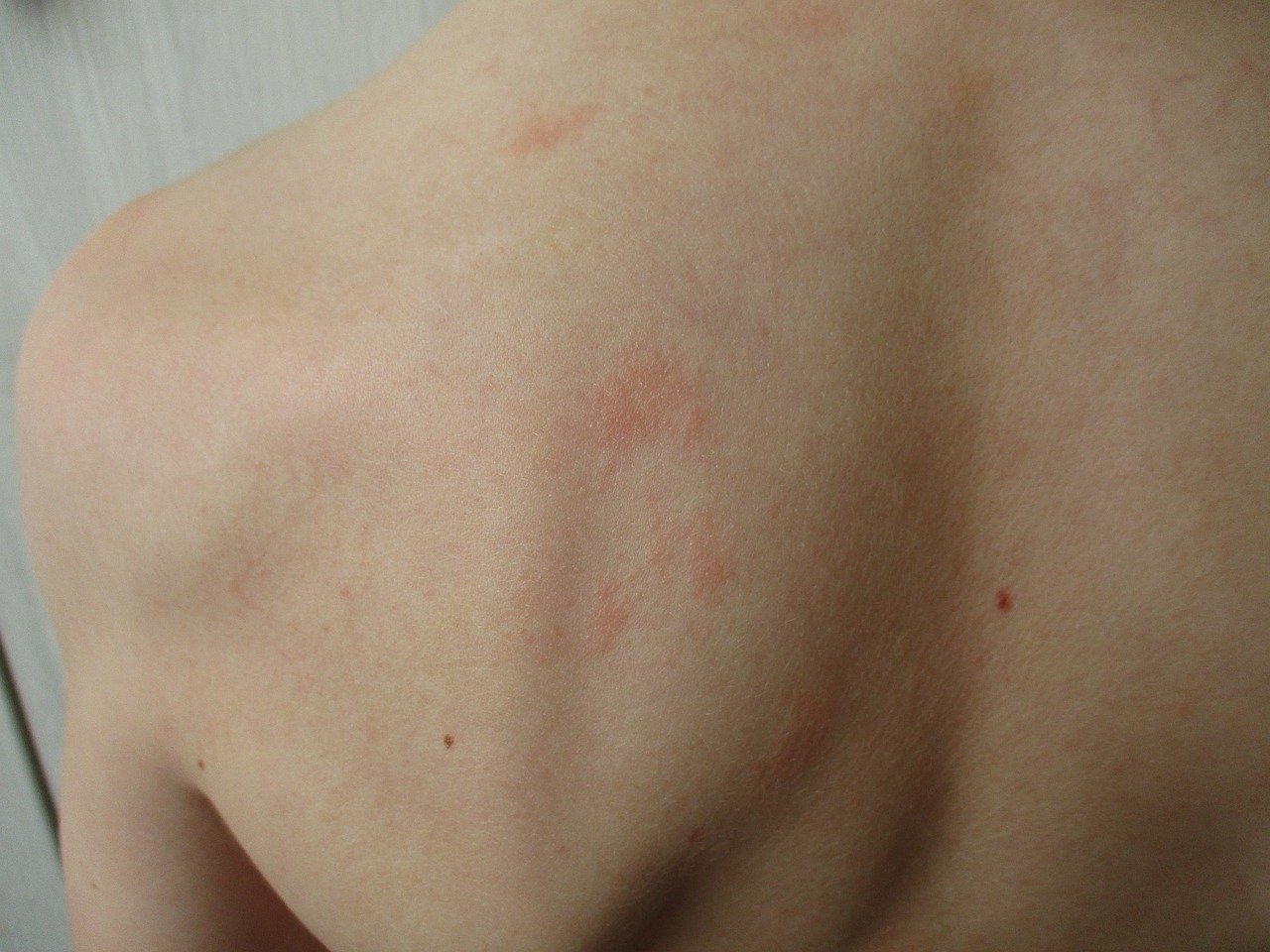
Henoch-Schonlein Purpura
Coming soon
For images – follow the link – https://en.wikipedia.org/wiki/Henoch%E2%80%93Sch%C3%B6nlein_purpura
Idiopathic Thrombocytopenic Purpura
Coming soon
For images – follow the link – https://en.wikipedia.org/wiki/Immune_thrombocytopenic_purpura
Kawasaki Disease
Coming soon
For images – follow the link – https://www.webmd.com/children/picture-of-kawasakis-disease
Measles
Coming soon
For images – follow the link – https://www.dermnetnz.org/topics/measles-images
Septicaemia
Coming soon
For images – follow the link – https://www.dermnetnz.org/topics/septic-emboli
Molluscum Contagiosum
Molluscum contagiusum is a common infection of the skin that is caused by a pox virus.
It does not tend to cause symptoms other than a mildly itchy rash.
The virus is usually spread via skin to skin contact.
The rash looks like small pink or white shiny and waxy little domes. Each little dome has a tiny central pit.
Infected children do not need to be kept from school.
Treatment
Non is usually necessary. The condition eventually goes away on its own but can last many months.
For images – follow the link – https://www.dermnetnz.org/topics/molluscum-contagiosum-images/
Scarlet fever
Scarlet fever is a common infection in children aged between 2 and 8.
The condition is a bacterial illness and is associated with a high temperature, sore throat, a red strawberry like tongue and flu like symptoms.
The bacteria is highly contagious and is spread via droplets in the saliva.
The typical rash of scarlet fever starts shortly after the onset of symptoms. It is a flat red rash that tends to start on the stomach and chest before spreading across the body. It usually ends up widespread and can make the skin look like sandpaper. The rash starts to go after a couple of days and makes the skin peel.
Infected children should be kept from school until 24 hours after starting antibiotics.
Treatment
Antibiotics are required.
Paracetamol or ibuprofen for relief of pain and temperature symptoms.
Fluid to ensure hydration.
For images – follow the link – https://www.healthline.com/health/scarlet-fever
Slapped cheek
Slapped cheek is a common viral illness seen in young children.
As the condition is a viral illness it is associated with a mild temperature and a cold like symptoms.
The virus is spread through droplets in the saliva.
The characteristic rash can be seen as bright red cheeks before spreading to the arms, legs and truck. It does not usually affect the palms or soles.
Slapped cheek is important because the virus can harm and kill unborn babies.
Infected children do not need to be kept from school.
Treatment
Usually, non is necessary.
Paracetamol or ibuprofen for relief of pain and temperature symptoms.
Fluid to ensure hydration.
If slapped cheek infection is suspected during pregnancy, you must seek medical help.
For images – follow the link – https://www.nhs.uk/conditions/slapped-cheek-syndrome/
Hand, Foot and Mouth
Hand foot and mouth is a common viral illness seen in young children. It is not related to foot and mouth disease seen in cows.
As the condition is a viral illness it is associated with a high temperature and a sore throat.
The virus is spread through droplets in the saliva or from the lesions seen on the skin.
The rash is usually seen as typical small red blisters on the hands and feet as well as on the tongue, lips and lining of the cheeks.
Infected children should be kept from school until they feel well enough in themselves to return.
Treatment
Usually, non is necessary.
Paracetamol or ibuprofen for relief of pain and temperature symptoms.
Fluid to ensure hydration.
For images – follow the link – https://www.dermnetnz.org/topics/hand-foot-and-mouth-disease-images
Rubella (German Measles)
Rubella is an uncommon viral illness which is infectious from 7 days before the onset of the rash and 4 days after the rash erupts.
As the condition is a viral illness it is associated with a temperature and mild flu like symptoms.
The virus is usually spread via droplets in the saliva.
The typical rash of rubella is small, flat red spots that can be mildly itchy. The rash rapidly spreads over a couple of days before fading away.
Rubella is important because the virus can harm and kill unborn babies in early pregnancy. For this reason Rubella is included in childhood vaccinations.
Infected children should be kept from school for six days from the onset of the rash.
Treatment
Usually, non is necessary.
Paracetamol or ibuprofen for relief of pain and temperature symptoms.
Fluid to ensure hydration.
If rubella infection is suspected during pregnancy, you must seek urgent medical help.
For images – follow the link – https://en.wikipedia.org/wiki/Rubella
